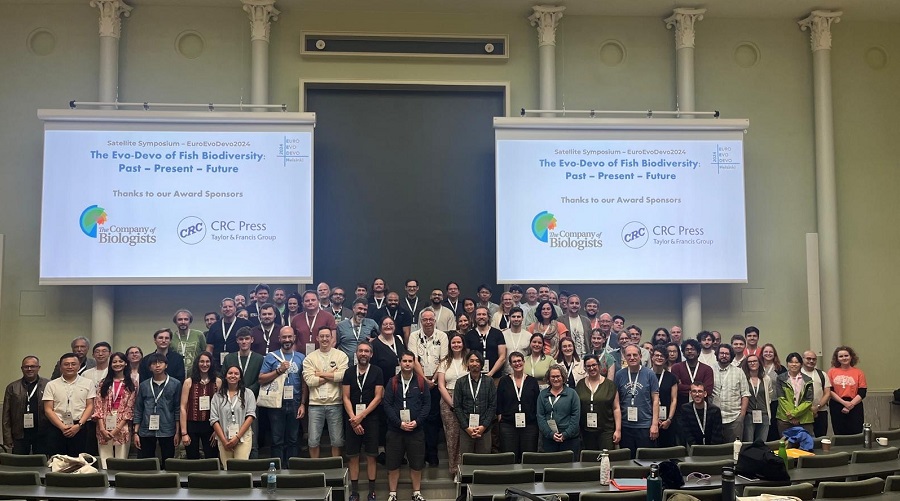The Sea Around Us principal investigator, Dr. Daniel Pauly, presented his Gill Oxygen Limitation Theory (GOLT) at the 9th Conference of the European Society for Evolutionary Developmental Biology held in Helsinki on June 24-28, 2024.
Known as EuroEvoDevo, the conference hosted 212 oral and 290 poster presentations and five satellite meetings.
Under 19 hours of Nordic daylight, participants delved into the depths of fish, amphioxus, platyhelminthe/polychaete and arthropod/crustacean biology, among other topics.
On June 25, at the Fish Satellite Meeting, Dr. Pauly offered a keynote titled “Breathing Water in a Warming World: On Overview of the Gill-Oxygen Limitation Theory (GOLT),” during which he explained that fish and other water-breathing animals deal with the little availability of oxygen in water through several adaptations shaped by physical and dimensional constraints.
These constraints are the key components of the Gill-Oxygen Limitation Theory, which provides mechanisms that explain key aspects of fish biology such as their growth and its response to temperature, the timing of maturation, and migrations, among others.
The GOLT’s basic tenet is that the surface area of the gills or other respiratory surfaces of water-breathing animals cannot, as two-dimensional structures, supply them with sufficient oxygen to keep up with the growth of their three-dimensional bodies and with the spontaneous denaturation of their bodies’ proteins, a process that is extremely temperature sensitive.
“The reduced oxygen supply per body weight induces sexual maturation and, later, a slowing and cessation of growth, all accompanied by an increase of physiological processes relying on glycolytic enzymes and a declining role of oxidative enzymes,” Dr. Pauly told the audience gathered at the University of Helsinki’s Small Hall. “The ‘dimensional tension’ underlying this argument, however, is widely misunderstood.”
The Sea Around Us PI went on to explain, point-by-point, the various components of the GOLT. He noted that aside from having a wide theoretical scope, the Gill Oxygen Limitation Theory has many potential practical applications, for example, in optimizing the way fish farmers aerate their ponds and in predicting how fish populations will react to the warming and deoxygenation of the oceans and freshwater bodies.
The audience received Dr. Pauly’s presentation with interest and many follow-up questions. The keynote also inspired future collaborations aimed at expanding the GOLT into genetics and genomics.


